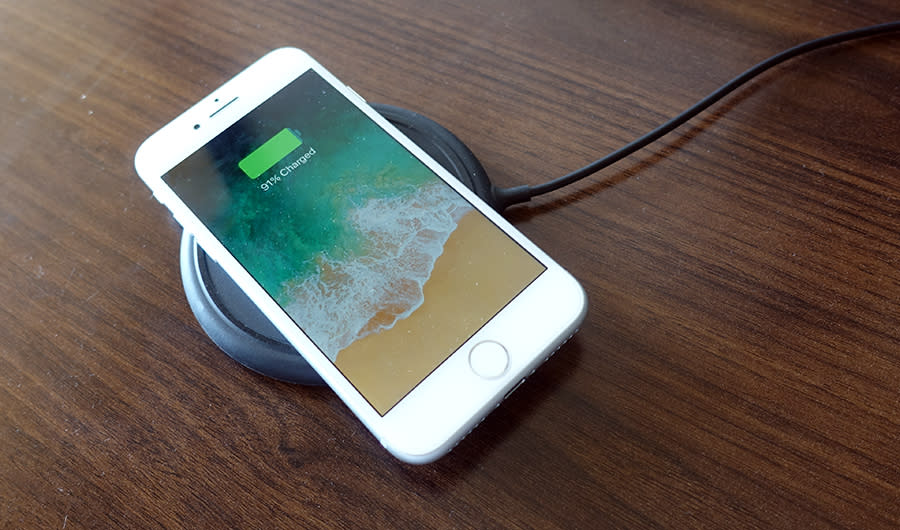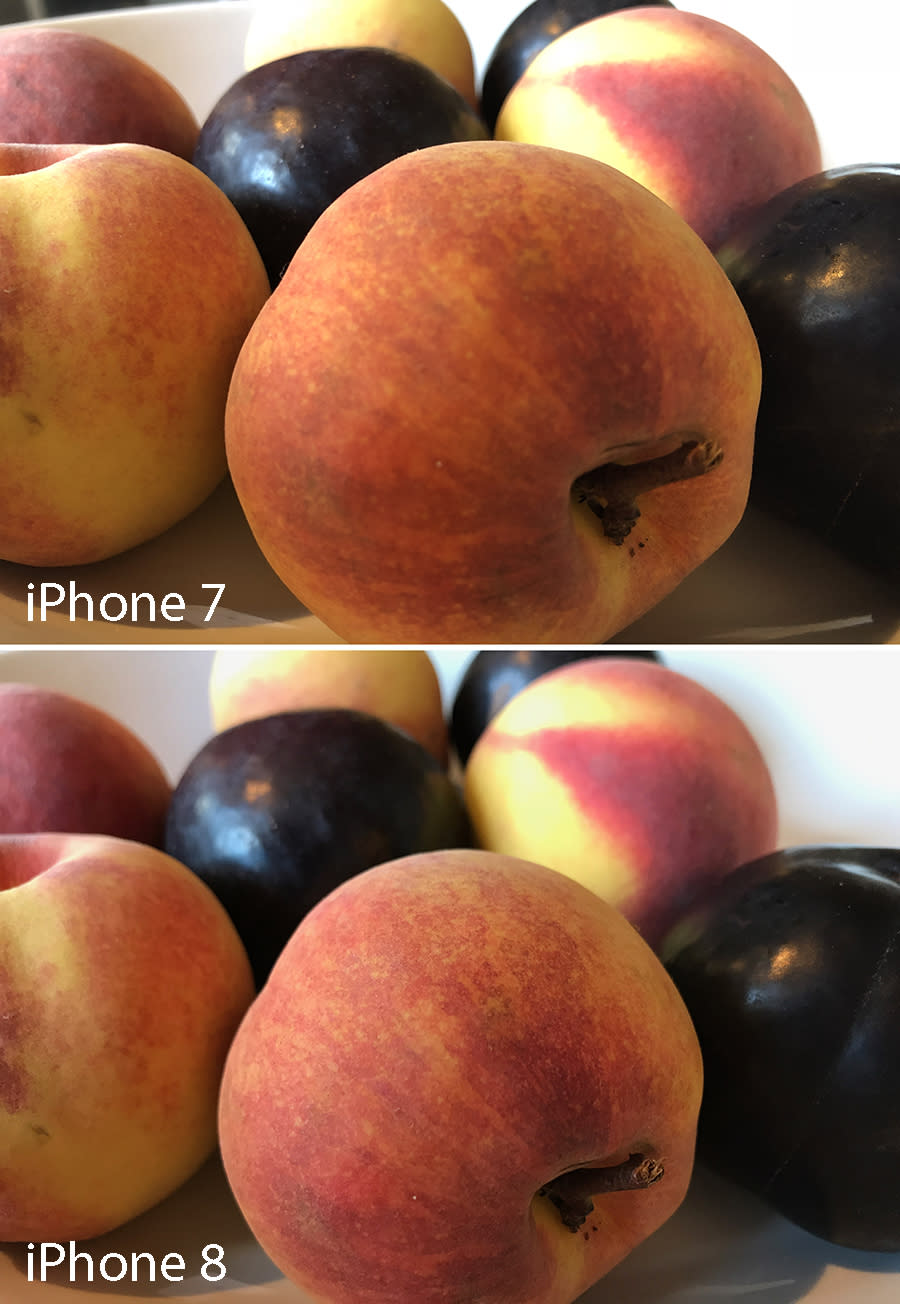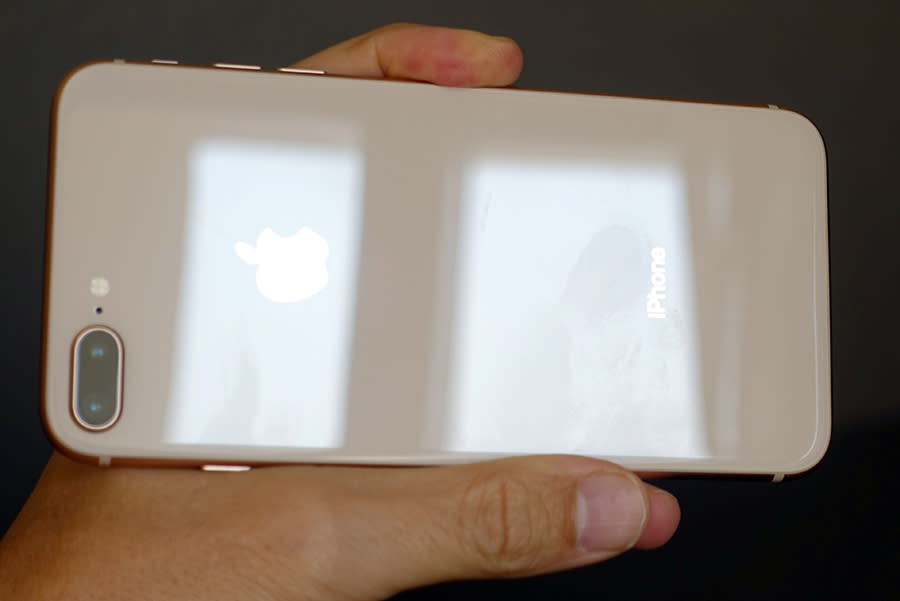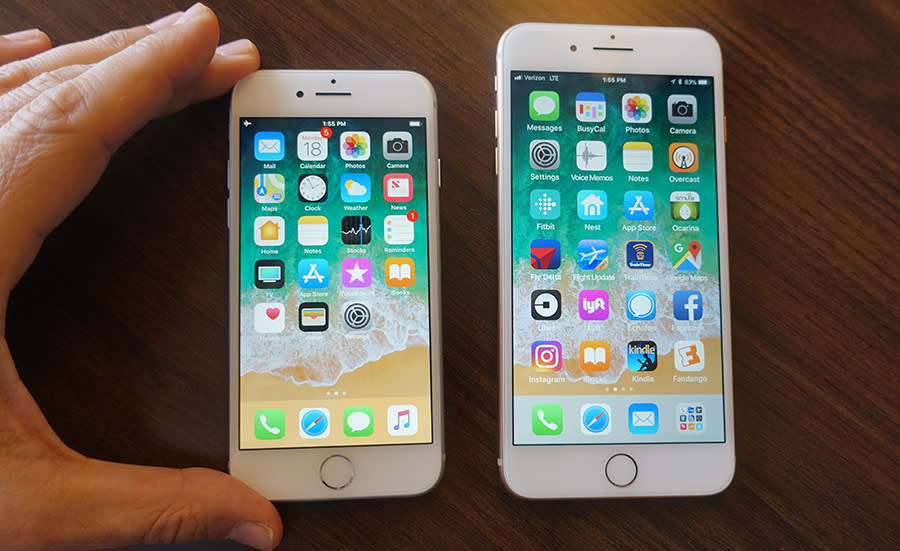iPhone 8 reviewed: Nice, but nothing to buzz about
The gadget world is buzzing about Apple’s upcoming iPhone X, which it unveiled last week.
Good thing, too—because if Apple (AAPL) hadn’t unveiled the iPhone X, there’d be no buzzing at all. The other phone Apple unveiled that day, the iPhone 8, is a very minor upgrade indeed.
(Heaven knows what they’re going to call next year’s models. The iPhone 9 and the iPhone XI?)
Reviewers won’t get the iPhone X to review until next month. But the iPhone 8 gets into the public’s hands this Friday, so the time is ripe for a review of that phone!

One big-ticket item
The iPhone 8 and its plus-size sibling, the iPhone 8 Plus, look almost exactly the same as the iPhone 7 family. The one difference is the back, which is now glass (gray, silver, or gold) instead of metal. It looks glossy and beautiful—not that most people will ever see it once they shove it into a case.
Apple says that its partner Corning Glass has hardened up this formulation by another 50%, but glass will always be more likely to shatter than metal.
Apple didn’t switch to glass for cosmetic reasons, though. It switched so that it could catch up with Samsung—by offering magnetic inductive charging.
Apple and Samsung call it wireless charging, but what they actually mean is “laying your phone on a special charging pad.” It’s true that you’re no longer plugging a cord into the phone, but the pad itself still has to be plugged into a power outlet.

If you’re among the “Oh, come on—how hard is it to plug in a cable?” crowd, I hear you. As author John Green might say, having to fuss with a power cord is the first-worldliest of first-world problems.
Still, once you’ve tried pad charging, you won’t go back. You come home from work, you just set the phone down on your way in. Or you set it down on your bedside table. Done.
Life will be even sweeter if Apple succeeds in its efforts to persuade hotels, airports, and car makers to put these charging pads everywhere you want to be. Then a smartphone’s short battery life (unimproved in the iPhone 8) will matter less.
The really great news is that Apple has adopted the same charging standard that Samsung and other companies use, called Qi (pronounced “chee”). You don’t have to buy Apple’s charging pad; you can use any company’s. These pads cost about $12 on Amazon (AMZN)—in fact, Apple doesn’t even sell a charging pad of its own.
Some time next year, Apple says, it will offer a jumbo mat called AirPower, which will offer a sweet perk: You can lay your iPhone, Apple Watch, and AirPod charging case (a special new one) on this pad simultaneously, and charge them all at once.
And now, some Frequently Asked Questions about charging:
How fast does the pad charge the phone? Same speed as the Lightning cable, according to Apple.
If I put the phone on the pad and plug in the Lightning cable, will it charge twice as fast? No. The cable takes over.
Does the iPhone 8 offer “fast charging”? Not on the pad. You can get fast charging through the cable—that is, a 50% charge in 30 minutes—but it’s going to cost you. You have to buy one of these USB-C power bricks ($50 and up) and a USB-C to Lightning cable (Apple’s is $25).

Better guts
What else is new? A faster processor, of course. In side-by-side tests with an iPhone 7, you can see the speedup everywhere. Opening apps is faster. Pulling up webpages is faster. Opening attachments is faster.
The screen now adapts to the color of the ambient light, adjusting its own white balance as necessary to make colors look right. Apple says it reduces eyestrain, but I don’t know—seems like a pretty minor change to me.
The stereo speakers go 25% louder. They sound great.
All of this, Apple says, makes the iPhone 8 a great platform for the new wave of augmented reality apps that will start appearing in the app store this week. These apps, based on Apple’s AR Kit development tools, superimpose graphics or information on the live video image of the world around you. One app identifies the stars overhead, for example; another identifies the players on the ball field in front of you. I’ll be reviewing a lot of these apps in the weeks to come.
Better cameras
Apple says the 12-megapixel camera now has “larger, faster sensor; a new color filter; deeper pixels.” (Deeper pixels?)
Anyway, I took a bunch of shots with the iPhone 7 and 8 side-by-side to see if there’s any difference. And sure enough. The top-right peach is more blown out in the iPhone 7 shot, and there’s more detail in the bottom peach on the iPhone 8:

Same thing on the alligator: Better color range and detail on the 8:

Very nice.
On the larger iPhone 8 Plus, there’s some fancy stuff going on with its dual-lens setup. As on last year’s 7 Plus, this phone has two camera lenses: one wider angle, one a 2X zoom. Clever software lets you blend the zoom to any degree between them (or, using digital zooming, go all the way up to 10X).

But because the two-lens setup can tell the foreground subject apart from its background, it’s capable of creating a soft blurry-background look, like this:

(Some photographers refer to this blurriness as bokeh, although technically, that word describes the quality of the blurriness, not the blurriness itself. “I love the bokeh this lens gives you,” you might hear.)
Ordinarily, you see that look only in professional photos, or at least photos taken with big black SLR cameras using high-aperture lenses (f/1.8, for example).
In the 8 Plus, Apple says that the bokeh (yes, the quality of the blurriness) is improved—and there’s something new. After taking a Portrait shot, you can tap Edit and then fiddle with the lighting, experimenting with different studio light setups. It’s in beta, so not quite finished, but already, the results can be pretty amazing. So far, almost every portrait I’ve taken looks better with the Studio Lighting effect, and the Stage Lighting, which cuts out the background entirely, is stunning:

Better 8 than never
So that’s really it. Magnetic charging, faster chip, slightly better camera.
And, of course, all of this runs on iOS 11, which brings a lot of goodies on its own.

The two iPhone storage capacities are 64 and 256 gigabytes (for $700 and $850; installment and rental plans are available). For the larger 8 Plus model, the prices are $800 and $950.
Some of those prices are higher than last year’s iPhone 7 prices, and some are lower. Weird. You do get twice the storage (64 gigs) on the base models.
For sure, the iPhone 8 is a great phone—it’s better than the iPhone 7 in several ways. Still, if you’re currently carrying, say, an iPhone 6s or 7, there’s not much here to justify the upgrade.
If you have something older, of course, the 8 will feel like a glorious improvement. But then again, so will the iPhone 7 and 7 Plus, which are still on sale, and for a lot less money ($550 and $670).
In other words, there’s really not much buzzing about the iPhone 8. For plenty of upgraders, though, there may well be some contented humming.
More from David Pogue:
How Apple envisions life without a Home button
The $999, eyebrow-raising iPhone X: David Pogue’s hands-on review
iOS11 is about to arrive — here’s what’s in it
MacOS High Sierra comes this fall—and brings these 23 features
T-Mobile COO: Why we make investments like free Netflix that ‘seem crazy’
How Apple’s iPhone has improved since its 2007 debut
David Pogue, tech columnist for Yahoo Finance, is the author of “iPhone: The Missing Manual.” He welcomes nontoxic comments in the comments section below. On the web, he’s davidpogue.com. On Twitter, he’s @pogue. On email, he’s [email protected]. You can read all his articles here, or you can sign up to get his columns by email.
